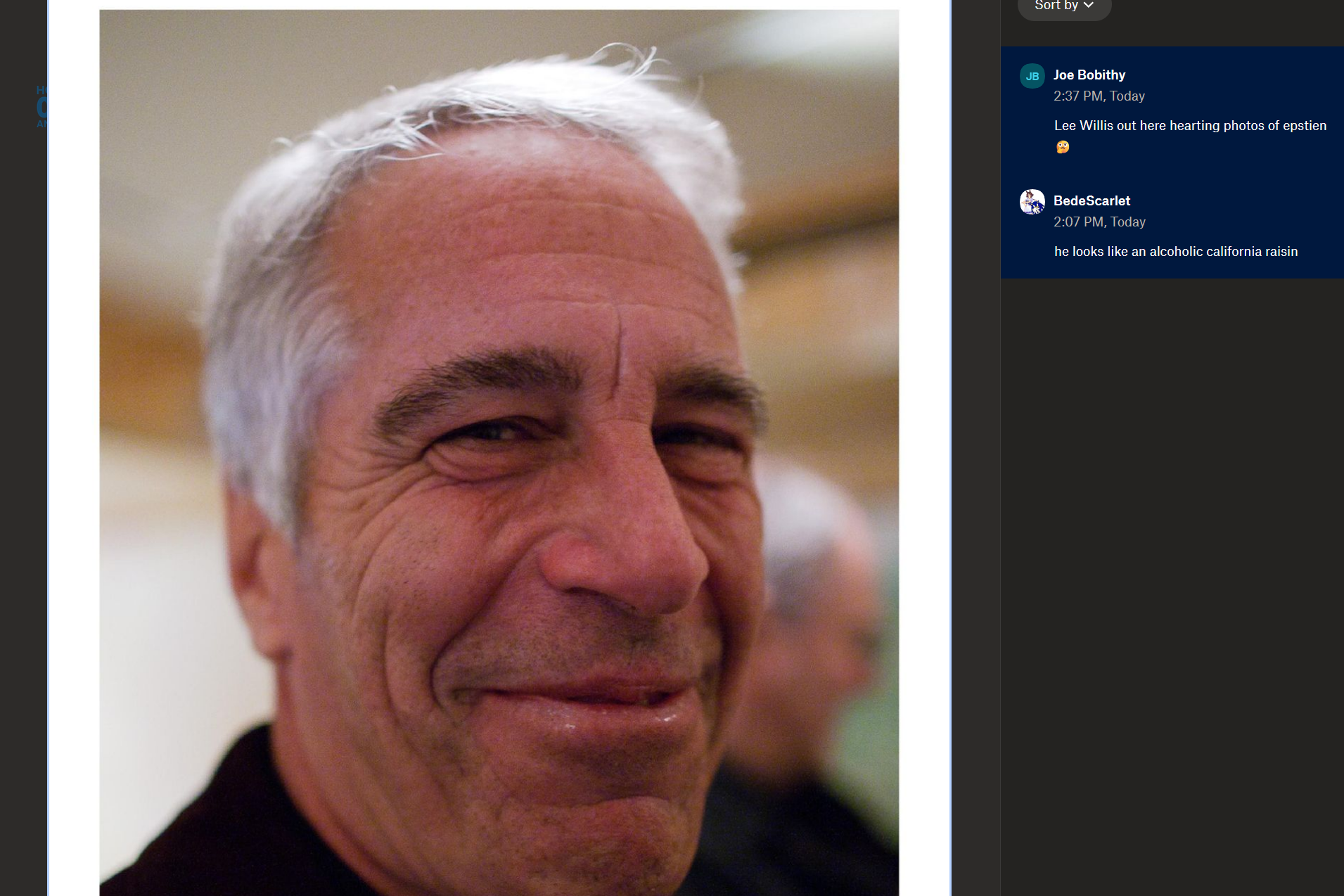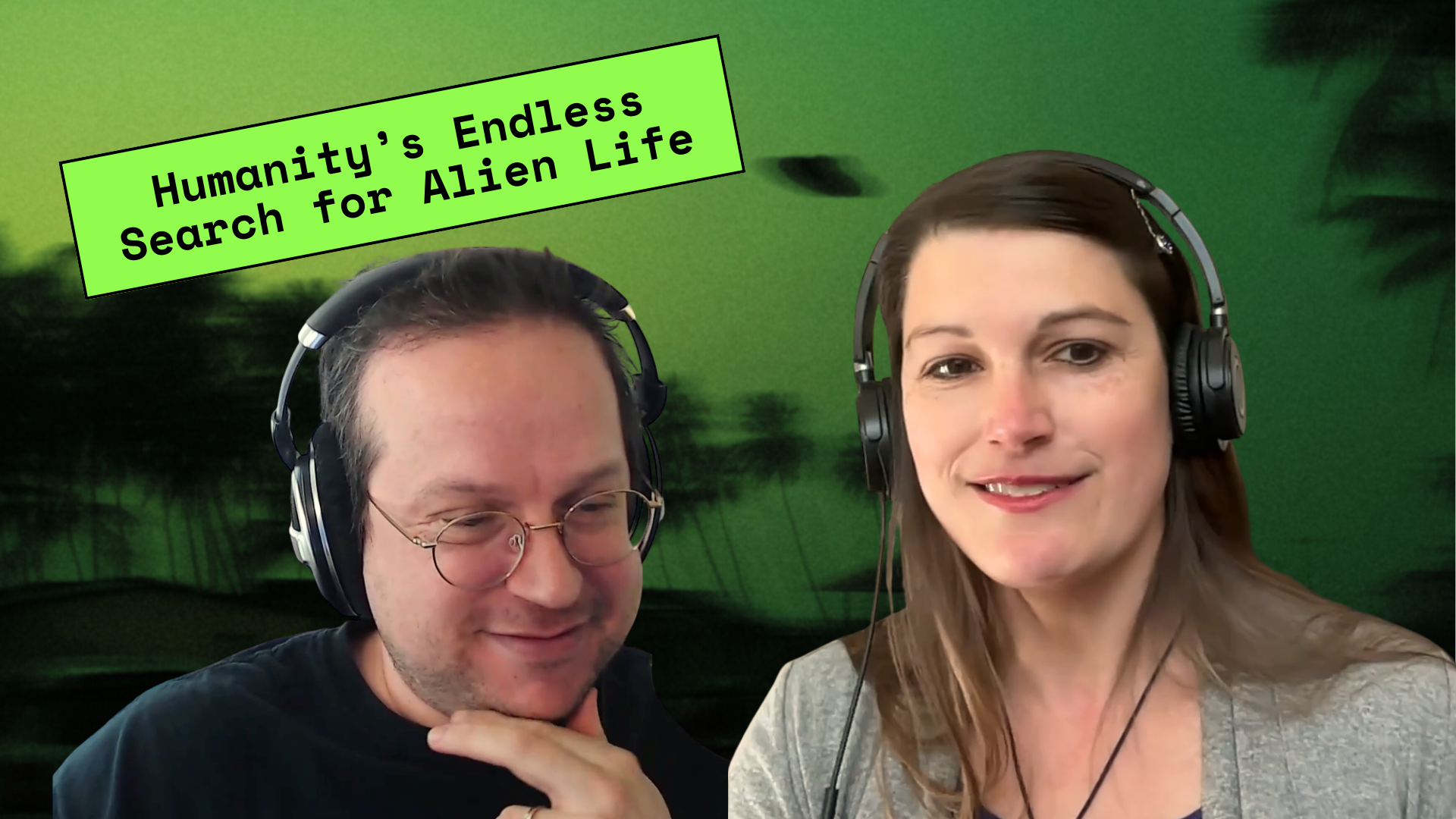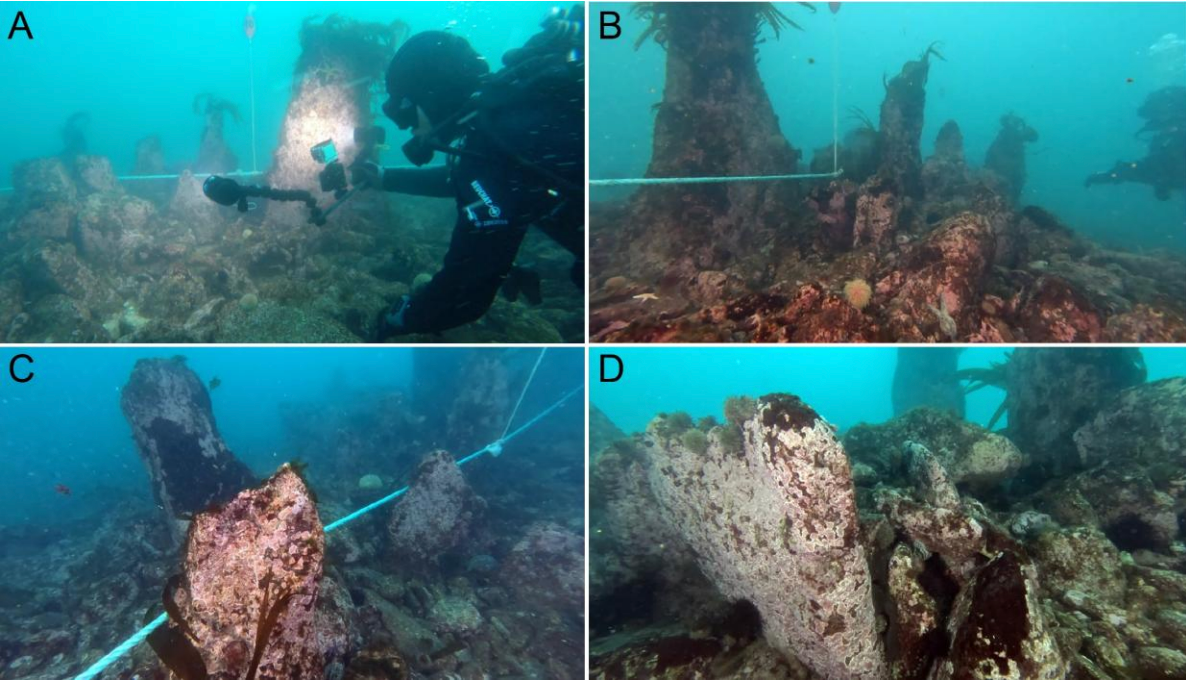2025-12-20 22:00:00

Welcome back to the Abstract! Here are the studies this week that defied expectations, broke barriers, made trash into shelter, and lived to swear another day.
First, there’s a giant, lemony, diamond-studded, black widow in space. I’ll explain. Then: electrons get ready for a close-up, the ultimately tiny home, and why expletives are the hottest new workout hack.
As always, for more of my work, check out my book First Contact: The Story of Our Obsession with Aliens or subscribe to my personal newsletter the BeX Files.
Astronomers have observed a Jupiter-sized planet more than 700 light years from Earth that is unlike anything spotted before and defies explanation.
Known as PSR J2322-2650b, the exoplanet is shaped like a lemon, boasts baffling skies, and may have hidden troves of diamonds in its belly. The distant world closely orbits a pulsar, a type of hyper-dense dead star that is tugging on the gassy planet, giving it the distended shape.
Pulsar companions are normally other stars. These are called “black widow” systems because winds from the pulsar weather down the stellar companion, eventually destroying it, similar to the deadly embrace of the namesake spider. It is very rare to see a black widow system with a planet as the pulsar companion.
Curious about this unusual exoplanet, astronomers observed it with the James Webb Space Telescope (JWST), thereby “unveiling a bizarre atmosphere that raises more questions than it answers,” according to their new study.
“PSR J2322–2650b is different from other ultralight pulsar companions, being the only pulsar companion with a mass, a density, and a temperature similar to those of hot Jupiters,” said researchers led by Michael Zhang of the University of Chicago. “The atmosphere of such an object has never been observed.”
“In stark contrast to every known exoplanet orbiting a main-sequence star, we find an atmosphere rich in molecular carbon (C3, C2) with strong westward winds,” they said.
Molecular carbon is unusual in planetary atmospheres because carbon atoms tend to bind to other elements, producing more familiar compounds like carbon dioxide. The atmosphere is so carbon-dominated, and so depleted in oxygen and nitrogen, that it doesn’t neatly line up with any known planetary formation scenarios. In a sparkling twist, its dense carbon atmosphere may produce soot clouds that then solidify into diamonds, bedazzling its core.
Is this a long-lived gas giant that survived the transformation of its star into a pulsar? Or was it born from the debris of the supernova that created the pulsar? And will this black widow system end as others do, with a slow death by pulsar winds? Nobody knows!
“Our findings pose a challenge to the current understanding of black-widow formation” and it will take more observations of similar systems “to determine whether PSR J2322–2650b’s composition is unusual or representative of the class.”
In other news…
Scientists have created the shortest X-ray light pulse ever produced, a breakthrough that could resolve the previously hidden motions of electrons and other particles at subatomic scales.
These newly-demonstrated soft X-ray pulses last for just 19.2 attoseconds, where an attosecond is equal to one quintillionth (10−18) of a second. In other words, an attosecond is to a second as a second is to 31.69 billion years, more than twice the age of the universe.

“Excitation, scattering, and electron relaxation are crucial processes that control how matter interacts with light,” said researchers led by Fernando Ardana-Lamas of the Institute of Photonic Science (ICFO) in Spain. “Their timing influences how chemical bonds form or break, how charge and energy move, and how properties of molecules and materials emerge. Understanding these dynamics requires attosecond resolution, as electronic excitations and dynamics occur on timescales of tens of attoseconds.”
“We demonstrated the generation of coherent attosecond [short X-ray] pulses with a duration of 19.2 as, significantly shorter than the atomic unit of time,” a milestone that offers “exciting new opportunities to investigate atomic, molecular, and solid-state physics,” the team concluded.
This high pulse speed is necessary for the development of instruments that could capture the mysterious dynamics of particles on subatomic timescales. Other experimental technologies are still required to make these ultrafast cameras a reality, but for now, here’s to shattering the shutter speed record.
Here’s a question for prospective home owners: have you ever considered living in a clump of regurgitated bones? This solution worked out well for Caribbean cave bees that lived some 20,000 years ago, according to a new study that reports the discovery of the first known fossilized bee nests built inside skeletal remains.
Scientists found the honeycombed bones buried in a cave on the island of Hispaniola that was once also inhabited by owls. Since owls regularly barf up pellets—gnarly globs of half-digested prey—the solitary bee species had a ready-made supply of skeletal remains, which were apparently a perfect place to raise offspring.

“Isolated brood cells…were found inside cavities of vertebrate remains,” including tooth sockets and the spinal canal, said researchers led by Lázaro Viñola López of the Field Museum in Chicago. “The high abundance of nests throughout the deposit indicated that this cave was used for a long period as a nesting aggregation area by this solitary bee.”
There’s nothing like getting the skeleton keys to your new skeleton house.
Cussing is discouraged in polite company, but it may actually be good for your health and performance, according to a new study that confirms swearing alleviates inhibitions and provides increased endurance during physical challenges.
Psychologists recruited nearly 200 volunteers to hold themselves in a sustained chair pushup while repeating either a swear word of their choice, or a neutral word, every two seconds. The results revealed a consistent “swearing advantage” characterized by “significant performance improvements in the swearing condition.”
“These effects have potential implications for athletic performance, rehabilitation, and contexts requiring courage or assertiveness,” said researchers led by Richard Stephens of Keele University. “As such, swearing may represent a low-cost, widely accessible psychological intervention to help individuals ‘not hold back’ when peak performance is needed.”
At long last, science has vindicated the foul-spoken, the pottymouths, the salty-tongued, and the vulgarians. So go forth, ye cursers, and f*ck that sh*t up! It’s the doctor’s orders, after all.
Thanks for reading! See you next week.
2025-12-20 00:10:49

This is Behind the Blog, where we share our behind-the-scenes thoughts about how a few of our top stories of the week came together. This week, we discuss history repeating itself and Meta's relationship with links.
JOSEPH: I wanted to add a little bit from behind the scenes of this piece: Man Charged for Wiping Phone Before CBP Could Search It. As I said on the podcast this week, there are and continue to be many questions around the case. Especially why CBP stopped Samuel Tunick in the first place.
In the piece I did not focus on Tunick’s activism because frankly we don’t know yet how big a role it played in CBP stopping him. I mentioned it but didn’t focus on it. I think regardless, someone being charged for allegedly wiping a phone is interesting essentially no matter who they are.
Yes, it absolutely may turn out that he was stopped specifically because of his activism. Maybe lots of people think it’s very likely that’s the reason. But I can’t frame a story because it feels like that’s maybe the case. I have to go on what actual evidence I have at the moment.
2025-12-19 04:53:49

Update: After publication of this piece, House Oversight Democrats disabled comments on the photos. The original article follows below.
Thursday afternoon House Democrats publicly released a new trove of photographs they’ve obtained from the estate of Jeffrey Epstein via Dropbox. They left the comments on so anyone who is signed into Dropbox and browsing the material can leave behind their thoughts.
Given that the investigation into Epstein is one of the most closely followed cases in the world and a subject of endless conspiracy theories, and that the committee released the trove of photographs with no context, it’s not surprising that people immediately began commenting on the photographs.
2025-12-19 01:19:25

Immigration and Customs Enforcement (ICE) has paid hundreds of thousands of dollars to a company that makes “AI agents” to rapidly track down targets. The company claims the “skip tracing” AI agents help agencies find people of interest and map out their family and other associates more quickly. According to the procurement records, the company’s services were specifically for Enforcement and Removal Operations (ERO), the part of ICE that identifies, arrests, and deports people.
The contract comes as ICE is spending millions of dollars, and plans to spend tens of millions more, on skip tracing services more broadly. The practice involves ICE paying bounty hunters to use digital tools and physically stalk immigrants to verify their addresses, then report that information to ICE so the agency can act.
2025-12-18 22:42:58

The past few years have been very exciting for those who want to believe. The U.S. government has released tantalizing videos and held several gripping hearings showing and discussing UFOs. People who always thought the government was hiding evidence of alien life from the general population saw it as proof that what they’ve said was happening all along. Skeptics have made compelling arguments for why all these revelations could be anything but aliens.
But this debate and humanity’s obsession with aliens goes as far back as recorded history. In her book, First Contact: The Story of Our Obsession with Aliens, 404 Media’s science reporter and author of The Abstract newsletter Becky Ferreira delves deep into this history, what it teaches us about humans, and what the near and far future of the search for alien life looks like.
I had a great time reading Becky’s book and an even better time discussing it with her on the podcast. It’s a great conversation that unpacks why these stories get so much attention, and a perspective on aliens in the news and pop culture that’s rooted in history and science.
Listen to the weekly podcast on Apple Podcasts, Spotify, or YouTube.
Become a paid subscriber for early access to these interview episodes and to power our journalism. If you become a paid subscriber, check your inbox for an email from our podcast host Transistor for a link to the subscribers-only version! You can also add that subscribers feed to your podcast app of choice and never miss an episode that way. The email should also contain the subscribers-only unlisted YouTube link for the extended video version too. It will also be in the show notes in your podcast player.
2025-12-18 22:00:53

Scientists have discovered the underwater ruins of huge stone structures erected by humans at least 7,000 years ago in the coastal waters of France, according to a new study published in the International Journal of Nautical Archaeology.
The submerged granite ruins near Sein Island, a Breton island in the Atlantic Ocean, are among the oldest large stone structures ever found in France, and may have inspired an ancient local legend about a city called Ys that vanished under the waves.
The structures vary in size from small stone dams, which were probably fish traps, to large monoliths and slabs that protrude six feet from the seafloor and extend 400 feet in length, which perhaps once served as a protective seawall.
Yves Fouquet, a geologist who works with the Society for Maritime Archaeology and Heritage (SAMM), first noticed hints of these long-lost megaliths in LiDAR data collected by the Litto3D program, a national initiative to create a precise 3D digital reconstruction of the entire French coastline. Fouquet and his colleagues confirmed the existence of the mysterious structures, and mapped out their locations, across dozens of dives carried out by ten SAMM divers between 2022 and 2024.
“The detailed analysis of these maps to redraw the underwater geological map of this area (faults, rock types) has made it possible to identify structures that did not appear natural to a geologist,” Fouquet said in an email to 404 Media.
Brittany, a peninsular region of northwest France, is home to the oldest megaliths in the nation and some of the earliest in Europe, which date back some 6,500 years. The team estimated that the submerged stone structures off Sein Island may predate these early megaliths in Brittany by about 500 years, based on their estimation of when the stones would have last been above sea level. But it will take more research to home in on the exact age of the megaliths.
“We plan to continue the exploration and carry out more detailed work to understand the architecture and precise the age of the structures,” Fouquet said.
The discovery of these stones opens a new window into the societies living in Brittany during the Mesolithic/Neolithic Transition, a period when hunter-gatherers began to shift toward settled lifestyles involving fishing, farming, and the construction of megaliths and other buildings.

The peoples who made these structures must have been both highly organized and relatively abundant in population in order to erect the stones. They were also sophisticated marine navigators, as the waters around Sein Island are notoriously dangerous—prone to swells and strong currents—which is one reason its underwater heritage has remained relatively poorly explored.
“Our results bear witness to the possible sedentary lifestyle of maritime hunter-gatherers on the coast of the extreme west of France from the 6th millennium onwards,” said Fouquet and his colleagues in the study. “The technical know-how to extract, transport, and erect monoliths and large slabs during the Mesolithic/Neolithic transition precedes by about 500 years the megalithic constructions in western France in the 5th millennium.”
The discovery raises new questions about the origins of these megalithics structures, which may have had a symbolic or religious resonance to these past peoples. the team added. “This discovery in a high hydrodynamic environment opens up new perspectives for searching for traces of human settlement in Brittany along the submerged coastline of the period 6000–5000 years cal. BCE.”
The researchers also speculate about a possible link between these structures, and the prehistoric people who made them, and local legends about sunken cities that may date back thousands of years.
“Legends about sunken cities, compared with recent data on rising sea levels, shows that the stories of ancient submergences, passed down by oral tradition, could date back as far as 5,000 to 15,000 years,” the team said, citing a 2022 study. “This suggests that oral traditions that may have preserved significant events in memory that could well be worthy of scientific examination. These settlements described in legend reveal the profound symbolic significance of maritime prehistory, which should not be overlooked.”
In particular, the people of Brittany have long told tales of the lost city of Ys, a sunken settlement thought to be located in the Bay of Douarnenez, about six miles east of Sein Island. The sunken megaliths off Sein Island “allow us to question the origin of the history of the city of Ys, not from the historical legends and their numerous additions, but from scientific findings that may be at the origin of this legend,” the team said.
It’s extremely tantalizing to imagine that the long-hidden ruins of these peoples, who appear to have been expert seafarers and builders, are the source of tales that date back for untold generations in the region. But while the researchers raise the possibility of a link between the stones and the story, they cannot conclusively confirm the connection.
“Legend is legend, enriched by all the additions of human imagination over the centuries,” Fouquet said in his email. “Our discoveries are based on what can be scientifically proven.”